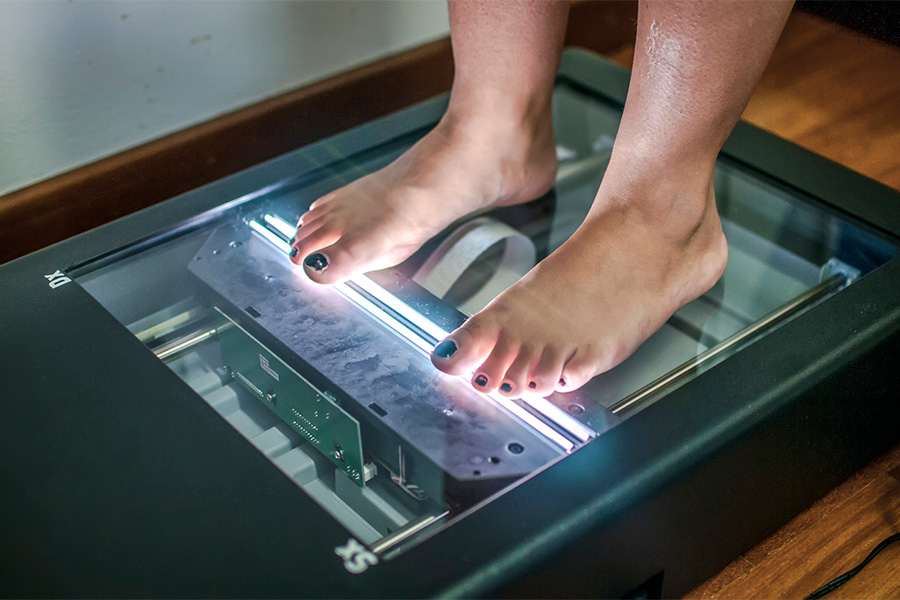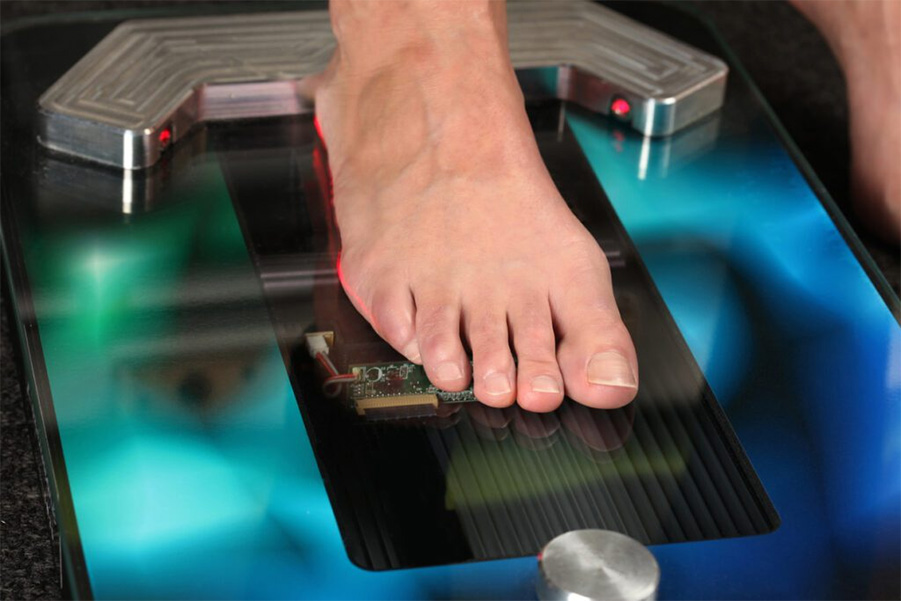3D Foot Scanner Orthotics
Orthotics are commonly prescribed by podiatrists or foot and ankle doctors to treat a multitude of foot and ankle issues. Prescription orthotics from a podiatrist are far superior to cookie-cutter ones founds in drugstores and supermarket pharmacies. One of the best technologies available for custom orthotics is 3D foot scanner orthotics. Let’s look at what this technology is, and how you can benefit from it.

What Makes Prescription Orthotics Better?
There are many reasons why prescription orthotics are better than over-the-counter or “generic” orthotics you can easily purchase at your local pharmacy. First, with a prescription, the orthotics are made to fit your specific foot size and shape. This ensures that they will be comfortable and provide the exact support you need based on your foot size and shape. They will fit perfectly in any shoes that you wear.
Second, because they are custom-made, they can be designed to address your specific needs. For example, if you have high arches, flat feet, or pronate (roll inward), your orthotics can be designed to correct these specific problems. Lastly, prescription orthotics last longer because they are made of higher quality materials than drugstore orthotics – they simply do not wear out as quickly, giving you more bang for your buck in the long run.
Traditional orthotics were created using plaster and 2D (two-dimensional) scanners. Nowadays, 3D (three-dimensional) scanners can be used to scan the foot. 3D scanners can create a three-dimensional image of the patient’s foot. This information is then used to create a custom orthotic that fits the contours of the foot and addresses issues that cause foot pain and injury. 3D scanning technology has revolutionized the orthotics industry, as it allows for a much more accurate fitting process.
Why Are 3D Foot Scanners Better?
Below are the advantages of 3D foot scanners:
- Provides quick scans – 3D scanners allow for a faster scan of the plantar and posterior surfaces of the foot and heel, as well as the medial and lateral sides of the foot and lower leg. The sooner the foot is scanned, the faster the lab receives the scan to manufacture the orthotics.
- Allows for a more comfortable scanning experience – 3D scanners allow for a non-weight bearing, neutral position of the foot, which means patients can lie down on an exam table for the scan. Previous methods required the patient to be in a standing position, with the foot setting on a flat surface.
- Ensures precision and accuracy – 3D scanners produce extremely precise and highly detailed impressions of the foot, down to 0.1mm, which is great because even the tiniest differences can make a big difference to the comfort and effectiveness of custom orthotics.
- 3D scanners reveal other issues – Additional diagnostic techniques such as postural assessment and the biomechanical exam can be done using a 3D scanner.
3D foot scanners are widely accepted as better than 2D scanners. The only disadvantage may be that this technology is not readily available in all podiatry clinics. So, if you are searching for a podiatrist who can help you get custom orthotics, go with a podiatrist who offers 3D foot scanning.
3D Foot Scanner Orthotics in Cincinnati, OH
At Cincinnati Foot & Ankle, we use the revolutionary OSI Allied Labs 3D scanning technology to produce our patients’ custom orthotics. We are proud to offer this option to our patients who can greatly benefit from a more precisely made pair of custom orthotics for their feet. For any questions about our 3D-printed orthotics or to schedule a consultation with one of our podiatrists, call our podiatry clinic nearest you and use our convenient online appointment request form.
Share

Devices worn in or on shoes to improve the fit, function, and comfort of the foot.

The transformation of the process of making custom orthotics.

The latest technology in the development of custom orthotics.

